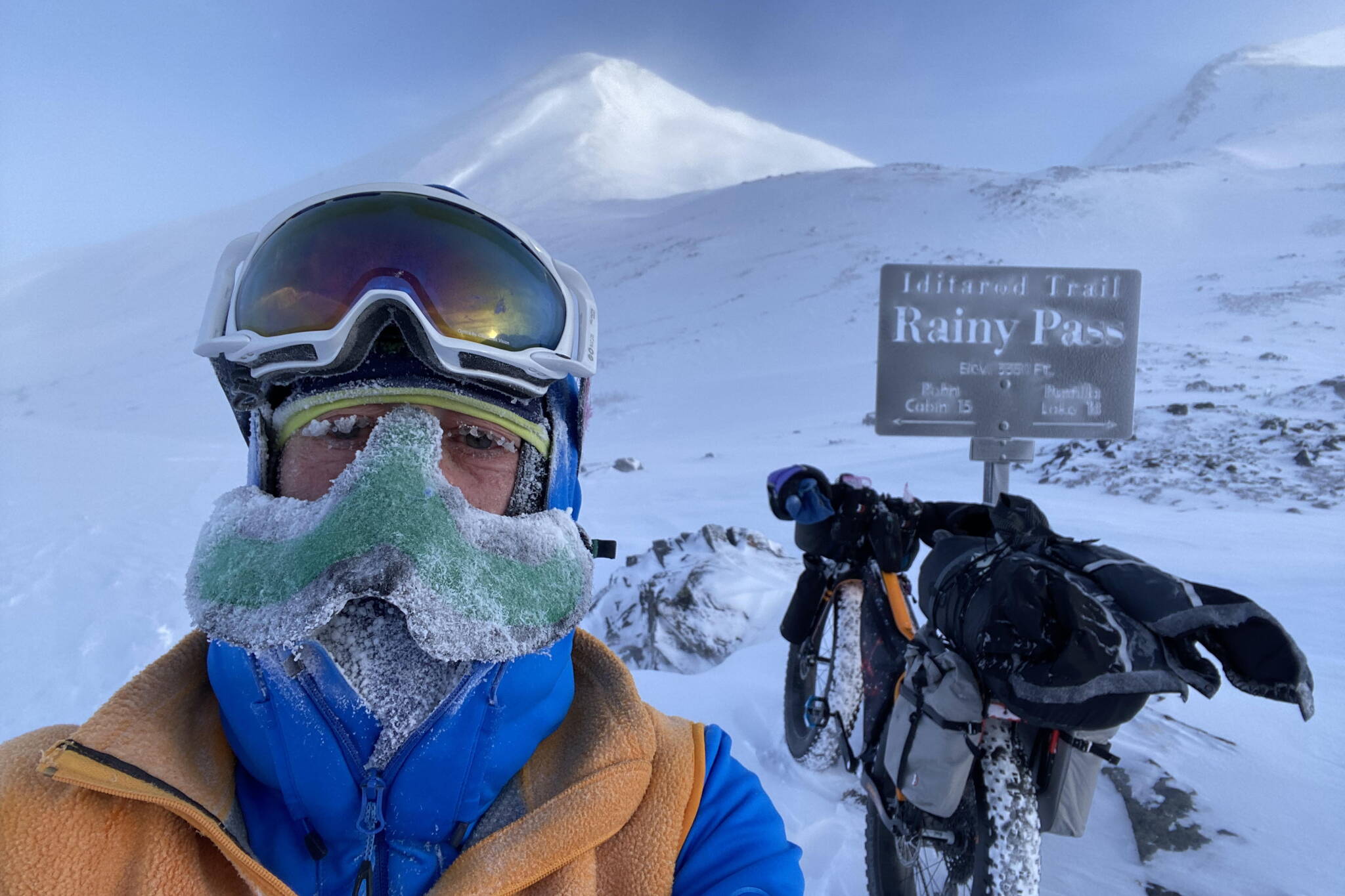If you could have read that frost-covered fat-biker’s mind as he rolled toward McGrath, Alaska, “as if Velcroed to the snow,” you might have suspected he was a scientist.
All Peter Delamere could think about was the dichotomy paradox, a concept Aristotle included in his book “Physics”: Forward motion is an illusion because halving the distance to your goal is a never-ending process.
“I crawled across the landscape, inching closer and closer to McGrath, but with the finish seemingly out of reach,” Delamere wrote in a summary of his recent experience.
“Without a thermometer I could not confirm what I suspected — it was colder than any of my training rides in Fairbanks.”
That is saying something. Delamere, an expert in space physics at the University of Alaska Fairbanks Geophysical Institute, had ridden his bike to work most days during a Fairbanks cold snap in January and February 2024. He also biked away from town most weekends on the extensive winter trail system surrounding Alaska’s second-largest city.
Delamere, a 54-year-old who knows more than most people about Jupiter and its constant display of aurorae, Saturn, Pluto, comets and other features far beyond the Earth, finished the 350-mile Iditarod Trail Invitational race on snowmachine trails from Knik to McGrath a few weeks ago. He arrived in third place, one hour in front of his nearest competitor.
Delamere calls himself a hack when compared to the fastest bike racers, but the facts don’t support it. Neither do my eyes when I have accompanied him on journeys. Not only does he zip along while deploying that somewhat plodding method of movement (10 mph is a speedy average for a bike with wheels as thick as a loaf of bread), but he has a scientist’s eye for detail.
For example, he is at heart a cross-country skier who nails the kick wax every time. His bike is tuned to precision and the camping gear he pulls out of his panniers seems just right: not too heavy, but puffy enough to provide warmth on the coldest bivouacs — such as the several he experienced on his trip to McGrath. He finished his journey in 3 days, 20 hours, for an average of about 100 miles covered each late-winter day.
Those bivouacs were short sleep sessions on the snow just off the trail. During them, he would kick his way into his sleeping bag fully clothed. The cold usually woke up the physicist, for a reason he understood.
“The problem with wearing boots in a sleeping bag is that the cold thermal mass of the boot will eventually freeze your feet,” he said.
Delamere estimates he slept about a dozen hours total when he was on the trail, with most sessions coming in the form of one-hour naps. Somehow, Delamere felt recharged after crawling out of his sleeping bag.
“Also, the good news is that packing a bivvy at minus 40 warms you up,” he said.
Researchers have found that athletes seem to finish faster in footraces that are 100 miles and shorter when they don’t stop to sleep. However, when the distance increases, a person’s circadian rhythms tuned to day length require at least a few short sleep sessions, such as Delamere’s hour-in-the-bushes strategy.
“In general, I function reasonably well after a nap,” he said.
Delamere also noted that the pair of bikers who finished ahead of him — Kevin Breitenbach of Fairbanks and Clinton Hodges of Anchorage — slept less than he did.
“Kevin and Clinton finished about 12 hours ahead of me with minimal sleep.” he said. “The ‘youngsters’ that finished behind me probably slept longer at the checkpoints.
“Basically, everybody travels with similar speed (though he was riding slower than Breitenbach and Hodges),” Delamere said. “Sleep determines the finish order.”
Delamere surprised himself when he discovered he could sleep so little and still attain a podium finish. He was also able to break the dichotomy paradox with the help of a York Peppermint Patty he stuffed into his mouth one mile before the finish at the McGrath Outpost.
“The 30-year-old (me) would never have succeeded, but the 54-year-old version could,” he said. “Perhaps raising kids (a son and daughter) is the difference. Maybe I actually can manage sleep deprivation.”
Delamere encouraged others to embark on a wintertime challenge that pushes past the boundaries of comfort.
“Go and sign up for the adventure of a lifetime! And keep biking to work.”
• Since the late 1970s, the University of Alaska Fairbanks’ Geophysical Institute has provided this column free in cooperation with the UAF research community. Ned Rozell ned.rozell@alaska.edu is a science writer for the Geophysical Institute.

